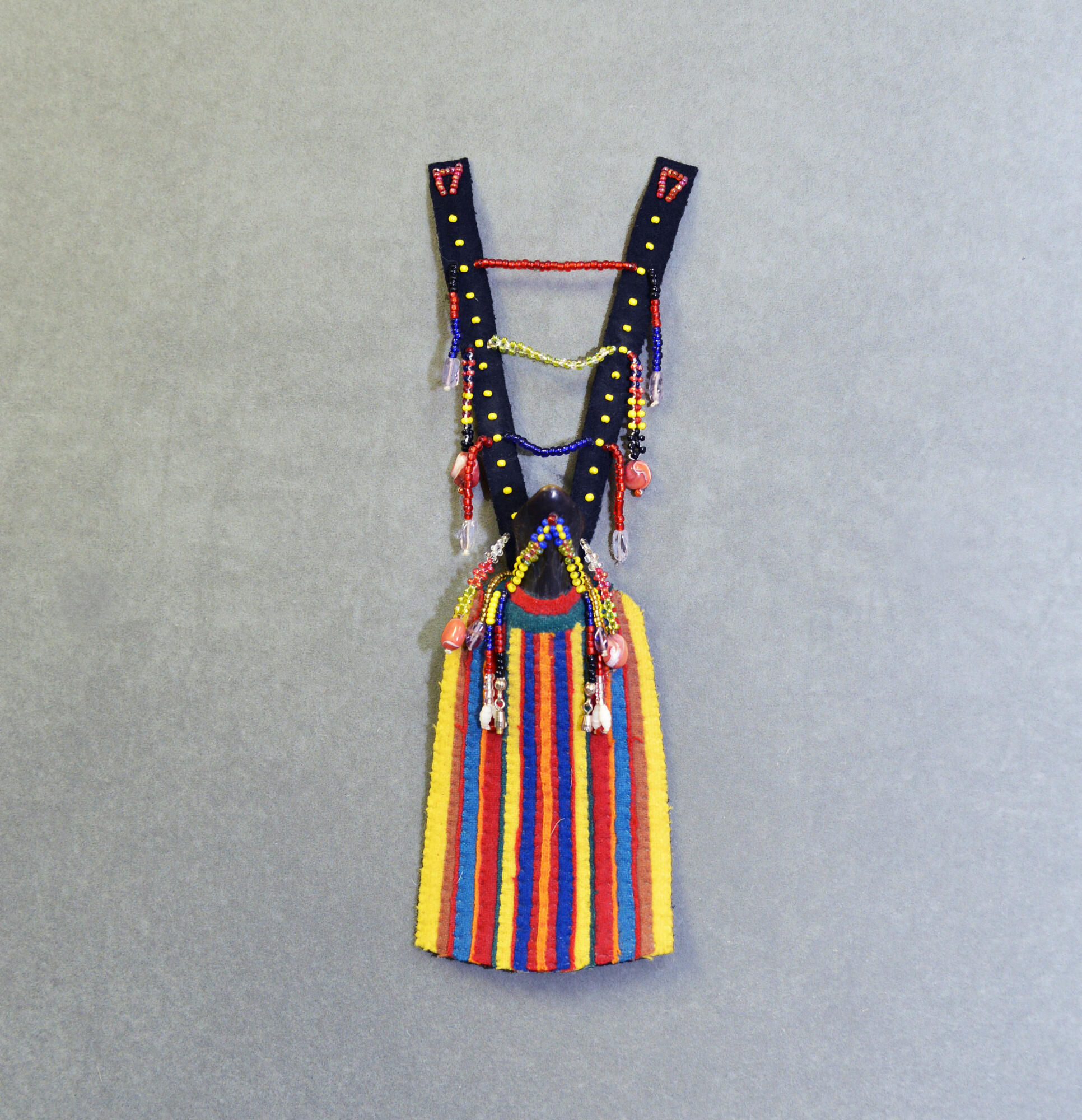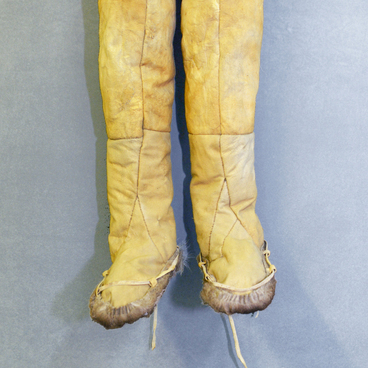Making unique toys by themselves is a part of material and spirit culture of the Forest Nenets. From the ancient times, toys and games teach children how to work and behave, through these games, children discover the world and their people’s values. It’s not for a mere amusement or resemblance of adults, but a way to unconsciously prepare themselves for independent life.
One of traditional dolls the Forest NEnets girls play with is called ‘nukhUko’. Its head is made of a beak of a waterbird: a male-doll’s head is a goose beak, a female-doll’s head is a duck beak. The Nenets believe that migratory birds fly away to God every year and thus they are clean and innocent. These dolls’ clothing is made of pieces of cloth or fur and decorated with colorful ribbons, it resembles a traditional male garment “mAlitsa” or a female “yagUshka”.
The Nenets girls start helping their mothers at an early age. Household keeping is solely a woman’s duty. At the age of five- or six-years girls learn how to handle needles and threads, and making outfit for a nukhUko is their first attempt to cut, sew and decorate clothes. When girls get older, they have the whole families of nukhUkos with chums, boats and tableware all made by hand.
A nukhUko is not just a traditional doll, it has a sacred meaning for the NEnets people. The doll is made without a face, arms or legs, without everything that makes it humanlike, to protect a child from evil spirits and hostile forces. It is believed that a human face and body may endow a doll with a supernatural power. Today, the Nenets girls play with manufactured dolls alongside with nukhukos, but both types are dressed in malitsas and yagushkas, kisy boots and fur kapors as before.
The nukhuko doll in Gubkinsky Museum of the Development of the North exposition wears a colorful cloth yagushka. The doll’s head is made of a duck beak with traditional braids decorations with beads attached to it. Beads are also on the front side of the beak like some sort of a forehead decoration.
One of traditional dolls the Forest NEnets girls play with is called ‘nukhUko’. Its head is made of a beak of a waterbird: a male-doll’s head is a goose beak, a female-doll’s head is a duck beak. The Nenets believe that migratory birds fly away to God every year and thus they are clean and innocent. These dolls’ clothing is made of pieces of cloth or fur and decorated with colorful ribbons, it resembles a traditional male garment “mAlitsa” or a female “yagUshka”.
The Nenets girls start helping their mothers at an early age. Household keeping is solely a woman’s duty. At the age of five- or six-years girls learn how to handle needles and threads, and making outfit for a nukhUko is their first attempt to cut, sew and decorate clothes. When girls get older, they have the whole families of nukhUkos with chums, boats and tableware all made by hand.
A nukhUko is not just a traditional doll, it has a sacred meaning for the NEnets people. The doll is made without a face, arms or legs, without everything that makes it humanlike, to protect a child from evil spirits and hostile forces. It is believed that a human face and body may endow a doll with a supernatural power. Today, the Nenets girls play with manufactured dolls alongside with nukhukos, but both types are dressed in malitsas and yagushkas, kisy boots and fur kapors as before.
The nukhuko doll in Gubkinsky Museum of the Development of the North exposition wears a colorful cloth yagushka. The doll’s head is made of a duck beak with traditional braids decorations with beads attached to it. Beads are also on the front side of the beak like some sort of a forehead decoration.



